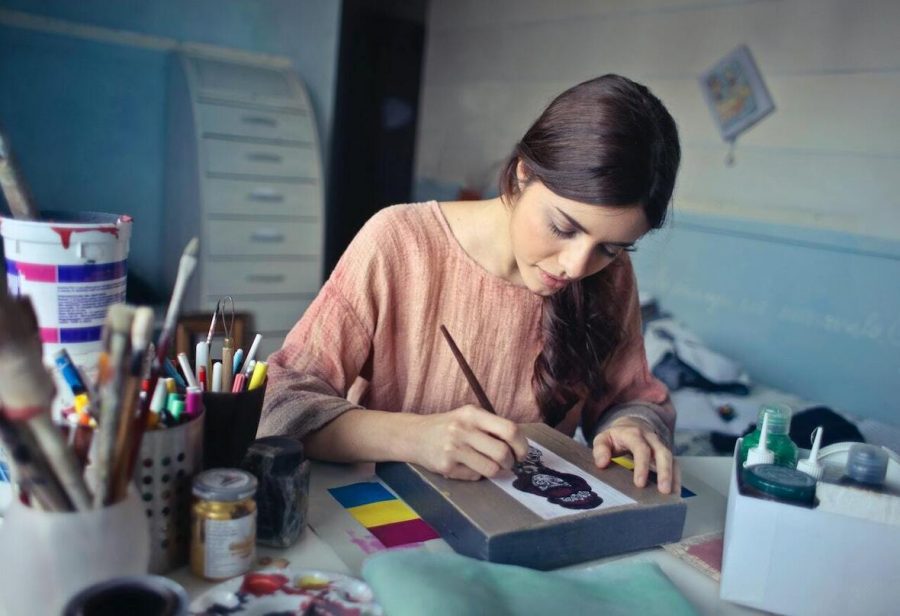Career Path for Graphic Designers
Even though a career in Graphic Designing looks simple, it has many different sub-branches where you can become an expert. Hence, if you are a professional looking to excel in this field, keep reading this blog to learn about the popular career options for graphic designers in 2023.

1. Jobs levels of Graphic Designers
Even though a career in Graphic Designing looks simple, it has many different sub-branches where you can become an expert. Hence, if you are a professional looking to excel in this field, keep reading this blog to learn about the popular career options for graphic designers in 2023.
Junior Graphic Designer
The central part of this Job is to design initial branding collaterals such as layouts, logo drawings, logo revisions, typeface repairs, and color adjustments.
- Pros: It is the first step towards becoming an Art Director. The creative team always includes a positive work atmosphere and potential portfolio growth for junior designers.
- Cons: The Designer gets a low basic pay at the start, and the same monotonous worklist can be tedious.
Graphic Designer
This role has a broad scope and is responsible for everything from developing new ideas to creating the final artwork. There is greater freedom to express oneself creatively than in a junior designer role.
- Pros: A wide range of work and exceptional creativity
- Cons: Stressful because untrained clientele demand speedy turnarounds and can reject good design ideas.
Senior Graphic Designer
Senior Graphic Designer performs complex duties, comprising from meeting with clients to managing full advertising campaigns. Typically, the task will consist of the entire conceptualizing and design process. Even though the company’s directors oversee the work, the senior Designer will have considerably more creative flexibility and assign significant tasks to Junior Designers.
- Pros: More creative autonomy and overall project freedom.
- Cons: It is stressful because of the high volume of work and the extended hours.
Studio Manager
This position is similar to a Senior Graphic Designer but focuses on directing various design activities and overseeing day-to-day operations. He/she will be in charge of allocating assignments, hiring employees, performing performance reviews, and procuring supplies, all while ensuring the Designers’ work is of sufficient quality.
- Pros: Authority Position and possibilities for departmental cooperation.
- Cons: Stressful because of the high quantity of management required.
Art Director
It is likely the most senior position in a Graphic Design firm. The role emphasizes making compelling marketing campaigns for the clients. You will routinely visit with clients to determine their needs and collaborate with other employees to ensure those goals are satisfied.
- Pros: The positive environment and a potentially very high payment
- Cons: Lengthy hours of work
In-House
Big businesses, MNCs, FMCGs, Publishing Houses, Big Brands, Academic Institutes and other firms often hire In-House Marketing Teams. It saves them the hassle of explaining their goals all the time, and the team solely works for the businesses, thus always working on new ideas for the company. However, this is more costly, and marketing decisions can get biased as there is no expert consultation from the outside world.
- Pros: Greater pay and more superficial internal advancement
- Cons: Generally, less diversity and creative freedom
Agency
Teams with a broad client base may specialize in advertising, corporate communications, or plain old graphic design. They have market experts working under them, providing diverse skill sets to their clients.
- Pros: Expect more diverse work.
- Cons: Expensive as compare to hiring a freelancer
Freelance
Although similar to Agency employment, you will be entirely on your own. You’ll need to find your clients and do the task by yourself.
- Pros: You can select the jobs that most appeal to you.
- Cons: You’ll always need to look for work to meet ends.
2. FAQs
Q. Should graphic designers be able to draw?
Ans. The ability to draw is undoubtedly useful for a graphic designer, although it is not always necessary. Many graphic designers use computer software as their primary tool for design creation, along with resources including digital drawing tablets, software brushes, and vector graphics.
Q. Differentiate between Illustrator and Graphic Designer
Ans. While graphic designers and illustrators both work in the visual arts sector and may have some similar talents, however, their work varies in terms of focus and goal. Illustrations focus on producing distinctive and aesthetically attractive images that tell a narrative or express a concept. In contrast, graphic designs strive to communicate a specific message or advertise a brand or product.
Q. Is it important for graphic designers to learn about coding?
Ans. Some coding expertise can be useful in some circumstances, even though it is not usually necessary for visual artists. For instance, knowing HTML, CSS, and JavaScript can help designers create artistic and useful designs when working on web design projects. Similarly, having an understanding of coding languages like Swift or Java can help designers create designs that are responsive to mobile devices if they are working on mobile app design.
Q. What is a Graphic Design Agency, and how can it help my brand?
Ans. Graphic Designing Agencies create visual materials for their clients for branding and marketing purposes. Different companies outsource them to lead their marketing department. The agencies recruit a specialized team who is expert in various areas and is dedicated to providing better services to the clients.






